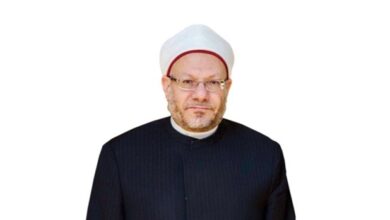In her book Forty Days and Forty Nights in Yemen: A Journey to Tarim, the City of Light, Ethar el-Katatney beautifully describes her experience in south Yemen, where she attended a course in traditional Islamic sciences. With its in-depth discussion of Islam, stunning photographs, personal ruminations, and daily anecdotes, Forty Days and Forty Nights in Yemencaptures a momentous time in the 23-year-old’s life, and is a meditative, thought-provoking experience for the reader.
A writer for Egypt Today and Business Today,last year el-Katatney received CNN’s MultiChoice African Journalist award for a piece called “The Business of Islam,” as well as the prize in the print category of the Anna Lindh Euro-Mediterranean Journalist Award for her article “Identity Crisis 101.” She contributes to Muslimah Media Watch, a blog that analyzes the representation of Muslim women in media and popular culture, and she holds conferences around the world to promote dialogue between different religions and cultures.
El-Katatney graduated from the American University in Cairo (AUC) with a bachelors degree in business administration and a minor in Arab and Islamic civilization. Currently, she is pursuing both an MBA and an MA in TV and digital journalism, also at AUC.
Tarim is a holy town in Islam, considered to have the highest concentration of descendants of the Prophet Mohamed in the world. “Spirituality is in the air,” el-Katatney says. The young author spent six weeks in Tarim, hoping to deepen her knowledge of herself and her religion. She was with 30 other women, half of them from the UK and half from the US, some recent converts to Islam.
The sheikh Habib Ali Zain el-Abdeen el-Jifri wrote the foreword to the book, which is printed on glossy paper and includes dozens of color photographs. It describes the people el-Katatney met, the historic places she visited, and the scholars she spent time with.
“I love dedicating my summers to learning more about my religion,” El-Katatney explained to Al-Masry Al-Youm. Tarim wasn’t her first such experience, though it was the first she decided to chronicle. In 2006, el-Katatney traveled to the UK for a three-week “summer training program” with religious lectures and outings, and a year later she attended the Rihla program in Saudi Arabia.
But her experience in Yemen was so profound that el-Katatney decided to blog the details. “When I wrote the blog, I was aiming more at non-Arabs and non-Muslims, to show them what is behind the niqab and the beards, what these people are really like. In a land commonly associated with terrorism and Al-Qaeda, I wanted to show its humanity. I wanted to show that living life as a Muslim and as a modern citizen of the world are not mutually exclusive.”
But the book also addresses the Arab and Muslim public. “I aimed to show Muslims that there is more to life than prayer and the hijab. There are levels of faith, and we shouldn’t only focus on the rules and rights which make up less than one percent of the Quran. The rest deals with values and behaviors, which is what Tarim was about. Spiritual discipline, and not physical discipline.”
Writing about Yemen was “as easy as breathing,” and el-Katatney enjoys both writing about personal experiences and journalism, though for different reasons. “As a journalist, I write not to inform, but to provoke thought and debate, and to raise awareness of important issues. As a writer, I write foremost for myself. As the writer Anais Nin said: ‘We write to taste life twice, in the moment and in retrospection.’”




